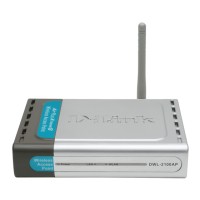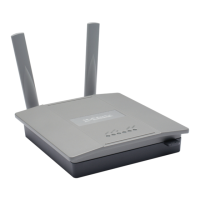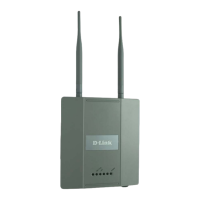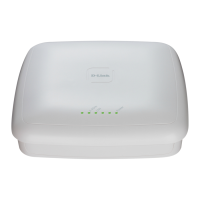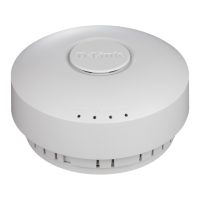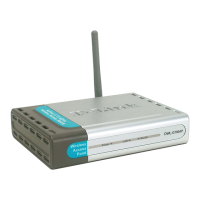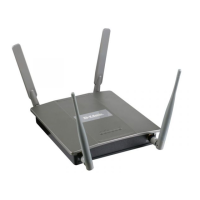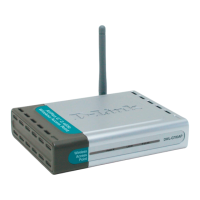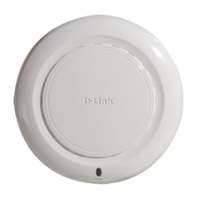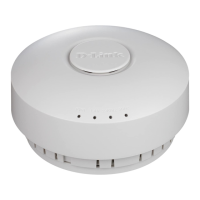
Do you have a question about the D-Link DWL-2600AP and is the answer not in the manual?
| Networking standards | IEEE 802.3af |
|---|---|
| Ethernet LAN data rates | 10, 100 Mbit/s |
| Maximum data transfer rate | 300 Mbit/s |
| Internal | Yes |
| LED indicators | Power, Stand-by, Status, WAN, WLAN |
| WAN connection | Ethernet (RJ-45) |
| Ethernet LAN (RJ-45) ports | 1 |
| Security algorithms | WEP, WPA, WPA2 |
| Operating temperature (T-T) | 0 - 40 °C |
| Operating relative humidity (H-H) | 10 - 90 % |
| Width | 160 mm |
|---|---|
| Height | 45 mm |
| Weight | 240 g |
| Dimensions (WxDxH) | 160 x 160 x 45 mm |
Information for system administrators and support personnel regarding network operation.
Overview of the manual's structure, outlining each section and its content.
Instructions for connecting the switch to the network for remote management via Telnet, Web, or SNMP.
Describes the switch boot process, including POST and accessing the Boot menu for special procedures.
Explains the three management methods: Web UI, CLI, and SNMP, and details the Web interface layout.
Describes typographical conventions used in the document, including symbols and their meanings.
Page for configuring and viewing general device information like system name, location, and contact.
Controls the IEEE 802.3x flow control mode for the switch, affecting packet transmission.
Page for configuring Power over Ethernet (PoE) features, including system usage thresholds and port management.
Allows configuration of the network interface's IP information for in-band connectivity.
Enables management of user accounts, including assigning passwords and security parameters for default accounts.
Covers global configuration of DHCP parameters for assigning IP addresses and network definitions.
Explains how to configure DNS servers and how the switch operates as a DNS client.
Details sFlow technology for monitoring high-speed switched and routed networks.
Covers configuration of Virtual LANs, including VLAN ID, port participation, and tagging behavior.
Details the Spanning Tree Protocol for preventing network loops and managing bridges.
A security feature to monitor DHCP messages and build a bindings database.
Explains Link Layer Discovery Protocol for advertising capabilities and detecting bad configurations.
A security feature that rejects invalid and malicious ARP packets by validating them against the DHCP snooping database.
Enables clients and servers to exchange messages across subnets and supports DHCP relay agent options.
Covers enabling routing and configuring port or VLAN IP addresses for Layer 3 operations.
Details the Interior Gateway Protocol for routing information propagation in smaller networks.
Explains how to configure VLAN routing interfaces on the system.
Provides a scheme to elect a backup router to handle default router failures and minimize traffic loss.
Allows direct configuration of switch queueing aspects for desired QoS behavior.
Supports traffic classification into streams and QoS treatment based on per-hop behaviors.
Provides an easy classification mechanism for voice packets to prioritize them.
Defines classification actions and rules for specific ports based on IP addresses.
Associates MAC addresses with VLANs and source/destination ports to control traffic.
Enables per-port security by allowing only specific MAC addresses to be forwarded.
Allows blocking network access until user verification, supporting guest and authenticated users.
Provides remote authentication, authorization, and accounting services for networks.
Manages 802.1X port-based authentication for supplicants and authenticators.
Provides centralized security for user access validation through encrypted protocol exchanges.
Provides an overview of status and statistics for WLAN components like APs, clients, and peer switches.
Covers global wireless settings, discovery, default AP profiles, and valid AP database configuration.
Allows creation and management of AP configuration templates for consistent settings across APs.
Details settings for radio interfaces, including modes, channels, and power levels.
Explains how to add managed APs to a cluster using WDS links for extended coverage.
Features for physically locating APs and wireless clients using triangulation and visualization tools.
Provides graphical representation of the wireless network, including APs, clients, and their locations.
